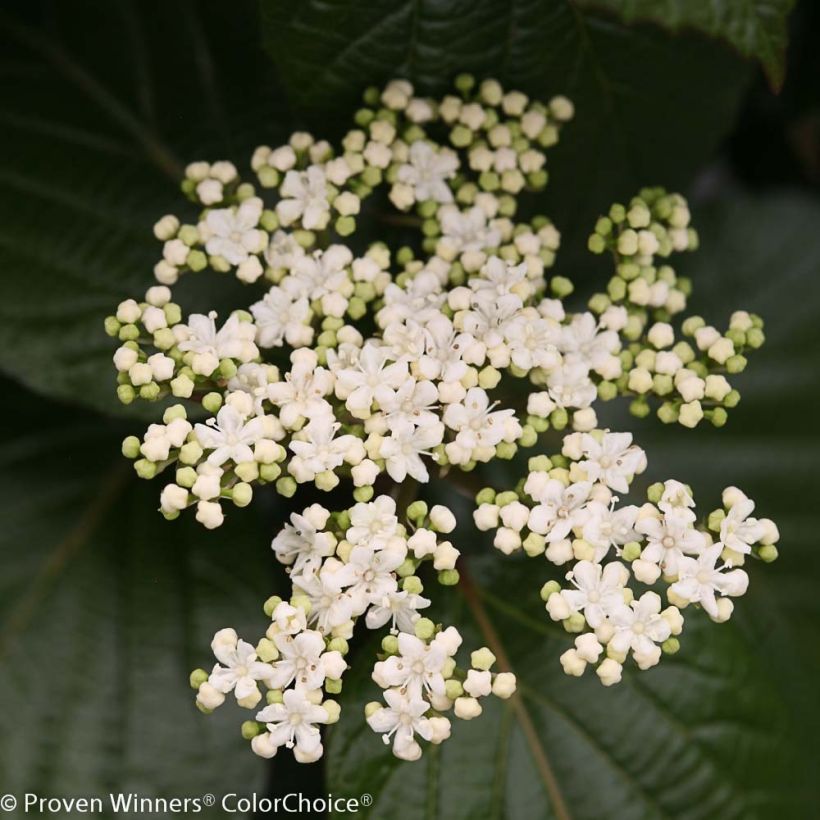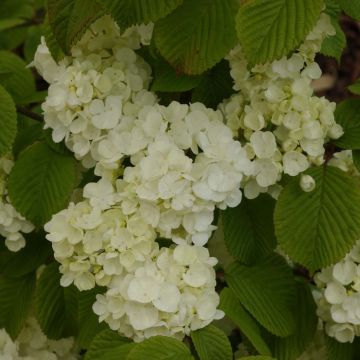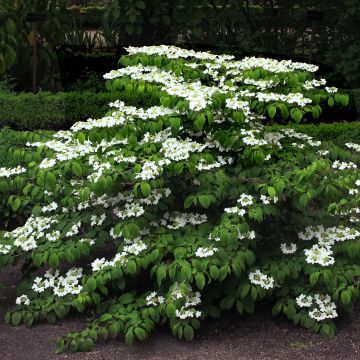

Viorne - Viburnum Shiny Dancer


Viorne - Viburnum Shiny Dancer


Viburnum Shiny Dancer
Viburnum Shiny Dancer
Viburnum Shiny Dancer
Special offer!
Receive a €20 voucher for any order over €90 (excluding delivery costs, credit notes, and plastic-free options)!
1- Add your favorite plants to your cart.
2- Once you have reached €90, confirm your order (you can even choose the delivery date!).
3- As soon as your order is shipped, you will receive an email containing your voucher code, valid for 3 months (90 days).
Your voucher is unique and can only be used once, for any order with a minimum value of €20, excluding delivery costs.
Can be combined with other current offers, non-divisible and non-refundable.
Home or relay delivery (depending on size and destination)
Schedule delivery date,
and select date in basket
This plant carries a 24 months recovery warranty
More information
We guarantee the quality of our plants for a full growing cycle, and will replace at our expense any plant that fails to recover under normal climatic and planting conditions.
Would this plant suit my garden?
Set up your Plantfit profile →
Description
Viburnum 'Shiny Dancer' is a new variety of small-growing hybrid viburnum with exceptional semi-evergreen foliage. The foliage displays an extremely shiny appearance. The young leaves are red when budding, turn dark green in summer, and burst into magnificent colours in autumn and winter. This small round bush is also adorned with a generous spring flowering, made up of large clusters of small white flowers. A beautiful novelty for the garden or terrace, easy to grow in ordinary and moist soil.
'Shiny Dancer' is a horticultural variety obtained in North Carolina (USA) in 2015. This bush is the result of cross-breeding between Viburnum 'Huron' (hybrid of Viburnum lobophyllum and V. japonicum) and 'Chippewa' (hybrid of Viburnum japonicum and V. dilatatum). It belongs to the Viburnaceae family. Growing slowly, the bush will not exceed 80cm (32in) to 1m (3ft) in all directions at maturity (up to 1.3 (4ft) after many years). Its foliage is evergreen depending on the climate, or late deciduous. It is composed of tough, waxy-textured leaves, strongly veined, measuring on average 11cm (4in) long and 7.8cm (3in) wide, broadly ovate in shape, pointed at their tips, with dentate margins. The surface of the lamina is very shiny, so that the leaf appears almost artificial. The young leaves are red in colour, turning red bordered with purple and then very dark green in summer. The autumn leaves, as well as those that persist in winter, become dark red and purple-violet. 'Shiny Dancer' blooms in early May, for 2 to 3 weeks, at the end of the previous year's branches, in the form of umbels measuring 9cm (4in) in diameter and 4cm (2in) in height. The flowers have no fragrance. Each inflorescence is composed of 150 to 400 tiny flowers ranging from yellow-green to white. The fruiting is abundant and decorative in the presence of other viburnums derived from the Viburnum japonicum species in the garden. It takes the form of clusters filled with red round berries, 1cm (1in) in diameter, black when ripe and greatly appreciated by birds.
Completely hardy, 'Shiny Dancer' is an undemanding plant. It thrives in sunny or semi-shaded positions, and flourishes in any ordinary, preferably not too chalky soil. It is used as a focal point in very small gardens, in front of a hedge or a bed of tall shrubs in larger gardens. It can be planted with a variety of small bushes chosen for their autumn foliage (Viburnum Eskimo, oakleaf hydrangea, Physocarpus), their spring flowering (abelias, deutzias, dwarf lilacs, Buddleia 'Wisteria Lane'), or for their attractive fruiting (callicarpas, symphorines). Its beautiful inflorescences can be used in spring bouquets, along with daffodils and tulips. Viburnum 'Shiny Dancer' is currently one of the smallest viburnums available on the market: a rare quality that allows it to be grown for many years in a large pot to decorate a terrace!
Report an error about the product description
Viburnum Shiny Dancer in pictures




Plant habit
Flowering
Foliage
Botanical data
Viburnum
Shiny Dancer
Caprifoliaceae (Adoxaceae)
Cultivar or hybrid
Other Viburnum
View all →Planting and care
Viburnum 'Shiny Dancer' thrives in sunny or semi-shady positions. While it prefers moist, light soil, it adapts to any good garden soil that is not too dry, even clayey or slightly chalky. If the soil is chalky, you can add ericaceous soil and compost to the planting substrate. Watering generously after planting and during the first few weeks will ensure good establishment. Pruning can be done after flowering to maintain a compact habit, but this variety does not require any specific pruning.
Planting period
Intended location
Care
This item has not been reviewed yet - be the first to leave a review about it.
Similar products
Haven't found what you were looking for?
Hardiness is the lowest winter temperature a plant can endure without suffering serious damage or even dying. However, hardiness is affected by location (a sheltered area, such as a patio), protection (winter cover) and soil type (hardiness is improved by well-drained soil).

Photo Sharing Terms & Conditions
In order to encourage gardeners to interact and share their experiences, Promesse de fleurs offers various media enabling content to be uploaded onto its Site - in particular via the ‘Photo sharing’ module.
The User agrees to refrain from:
- Posting any content that is illegal, prejudicial, insulting, racist, inciteful to hatred, revisionist, contrary to public decency, that infringes on privacy or on the privacy rights of third parties, in particular the publicity rights of persons and goods, intellectual property rights, or the right to privacy.
- Submitting content on behalf of a third party;
- Impersonate the identity of a third party and/or publish any personal information about a third party;
In general, the User undertakes to refrain from any unethical behaviour.
All Content (in particular text, comments, files, images, photos, videos, creative works, etc.), which may be subject to property or intellectual property rights, image or other private rights, shall remain the property of the User, subject to the limited rights granted by the terms of the licence granted by Promesse de fleurs as stated below. Users are at liberty to publish or not to publish such Content on the Site, notably via the ‘Photo Sharing’ facility, and accept that this Content shall be made public and freely accessible, notably on the Internet.
Users further acknowledge, undertake to have ,and guarantee that they hold all necessary rights and permissions to publish such material on the Site, in particular with regard to the legislation in force pertaining to any privacy, property, intellectual property, image, or contractual rights, or rights of any other nature. By publishing such Content on the Site, Users acknowledge accepting full liability as publishers of the Content within the meaning of the law, and grant Promesse de fleurs, free of charge, an inclusive, worldwide licence for the said Content for the entire duration of its publication, including all reproduction, representation, up/downloading, displaying, performing, transmission, and storage rights.
Users also grant permission for their name to be linked to the Content and accept that this link may not always be made available.
By engaging in posting material, Users consent to their Content becoming automatically accessible on the Internet, in particular on other sites and/or blogs and/or web pages of the Promesse de fleurs site, including in particular social pages and the Promesse de fleurs catalogue.
Users may secure the removal of entrusted content free of charge by issuing a simple request via our contact form.
The flowering period indicated on our website applies to countries and regions located in USDA zone 8 (France, the United Kingdom, Ireland, the Netherlands, etc.)
It will vary according to where you live:
- In zones 9 to 10 (Italy, Spain, Greece, etc.), flowering will occur about 2 to 4 weeks earlier.
- In zones 6 to 7 (Germany, Poland, Slovenia, and lower mountainous regions), flowering will be delayed by 2 to 3 weeks.
- In zone 5 (Central Europe, Scandinavia), blooming will be delayed by 3 to 5 weeks.
In temperate climates, pruning of spring-flowering shrubs (forsythia, spireas, etc.) should be done just after flowering.
Pruning of summer-flowering shrubs (Indian Lilac, Perovskia, etc.) can be done in winter or spring.
In cold regions as well as with frost-sensitive plants, avoid pruning too early when severe frosts may still occur.
The planting period indicated on our website applies to countries and regions located in USDA zone 8 (France, United Kingdom, Ireland, Netherlands).
It will vary according to where you live:
- In Mediterranean zones (Marseille, Madrid, Milan, etc.), autumn and winter are the best planting periods.
- In continental zones (Strasbourg, Munich, Vienna, etc.), delay planting by 2 to 3 weeks in spring and bring it forward by 2 to 4 weeks in autumn.
- In mountainous regions (the Alps, Pyrenees, Carpathians, etc.), it is best to plant in late spring (May-June) or late summer (August-September).
The harvesting period indicated on our website applies to countries and regions in USDA zone 8 (France, England, Ireland, the Netherlands).
In colder areas (Scandinavia, Poland, Austria...) fruit and vegetable harvests are likely to be delayed by 3-4 weeks.
In warmer areas (Italy, Spain, Greece, etc.), harvesting will probably take place earlier, depending on weather conditions.
The sowing periods indicated on our website apply to countries and regions within USDA Zone 8 (France, UK, Ireland, Netherlands).
In colder areas (Scandinavia, Poland, Austria...), delay any outdoor sowing by 3-4 weeks, or sow under glass.
In warmer climes (Italy, Spain, Greece, etc.), bring outdoor sowing forward by a few weeks.


















































